Injection molding is a widely used manufacturing process for producing various types of buckets.You will also discover that plastic bucket mold designs can vary in size, 5L to 35L paint bucket could be manufactured on paint bucket injection molding machines . These buckets are utilized in a variety of industries, including both food and non-food sectors.
Applications for the Bucket
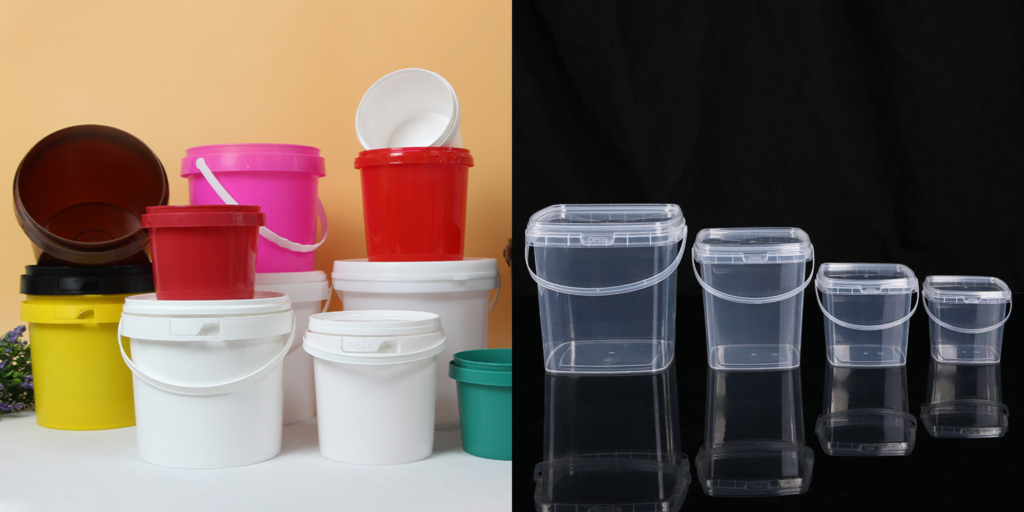
Injection molded buckets are versatile and serve various purposes. This section highlights a few common applications.
List of Application Examples
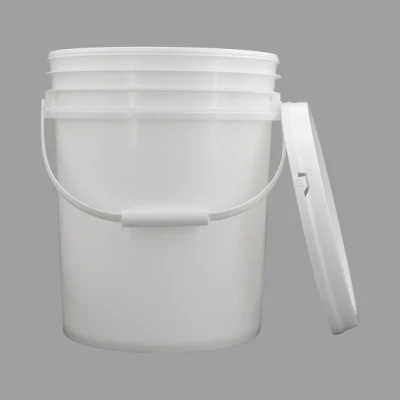
- Paint Buckets: Storing and transporting paints. Injection molded paint buckets are commonly made using paint bucket industry.
- Food Storage Buckets: Buckets made from PP and PE plastic provide a safe and durable option for food storage.
- Thin-Walled Buckets: These containers are used for disposable drink containers and fast food packaging.
- Utensil Buckets: Injection molded buckets can also be designed for utensil storage and organization.
- Pesticide Buckets: Durable containers for hazardous chemicals, with warnings and instructions for safe handling and disposal.
- Lube and Engine oil Buckets: Essential for storing and transporting lubricants and engine oils in various sizes and shapes.
- Chemical Products Buckets: Versatile containers for storing and transporting a range of chemical substances, with color-coding and labeling to prevent cross-contamination.
These examples showcase how injection molding technology helps create durable and cost-effective buckets for various applications.
Types of Bucket Printing
In Mold Label Printing
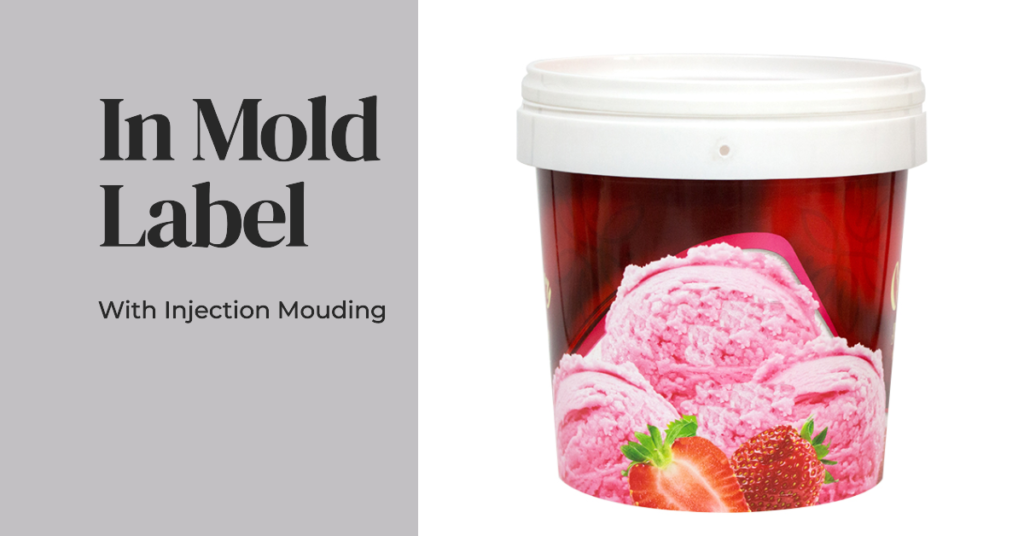
In-Mold Labeling (IML) technology has become a popular choice for producing plastic buckets with bucket injection molding making machine. It allows for high-quality graphics to be applied during the injection molding process. With IML, you can achieve complex designs, and it is suitable for a variety of resins.
Heat Transfer Printing
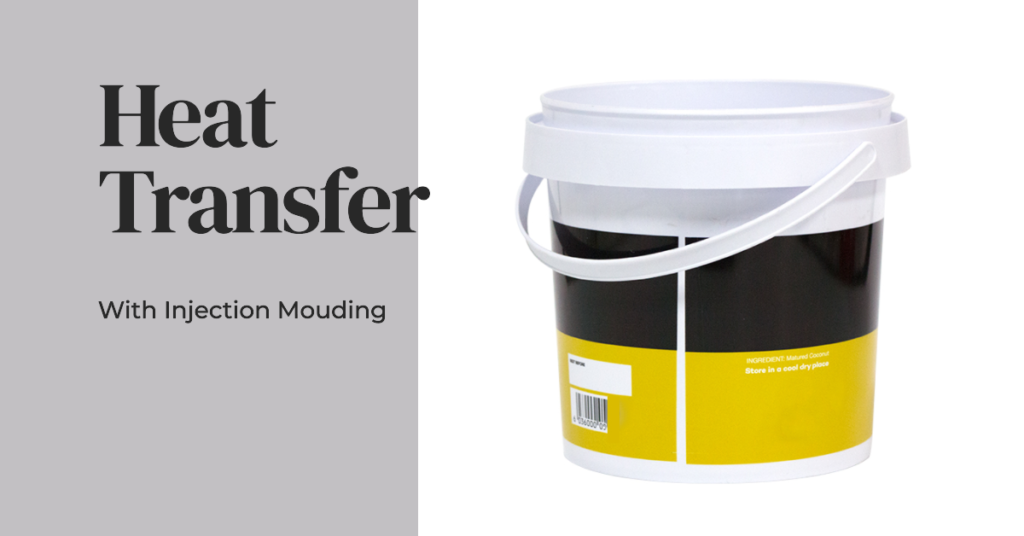
Heat Transfer Printing is another option for customizing your buckets. Using this method, your design is transferred onto the plastic bucket through heat and pressure. This process results in high-resolution images that are durable and long-lasting.
Silk Printing
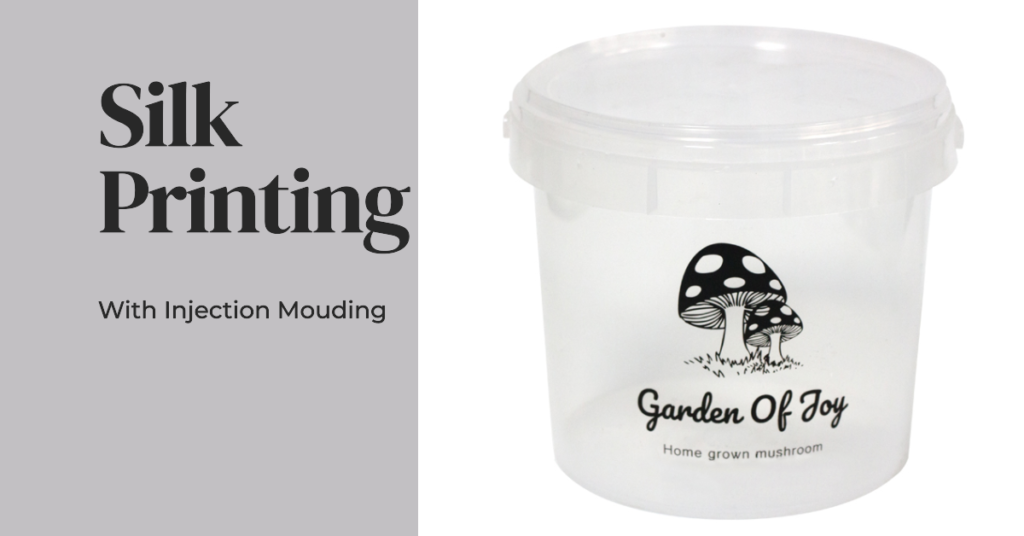
Silk Printing, also known as screen printing, can provide clear and vibrant prints on plastic buckets. Your design is printed onto the surface through a screen, which allows for better color control and layering. Silk printing is typically used for smaller production runs.
Label Sticker
Label Stickers are a cost-efficient way to add branding or design to your plastic buckets. These adhesive labels can be applied after the molding process and come in various shapes, sizes, and materials. Although they may not be as resistant to wear and tear as other printing methods, they can provide a quick and easy solution for customization.
Type of Bucket to Make
Round Plastic Bucket
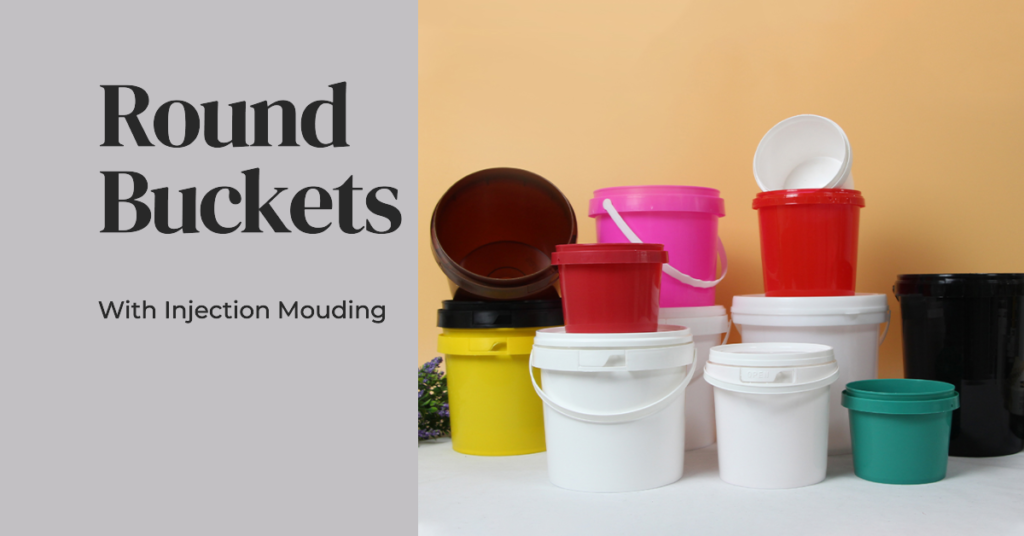
When considering the type of injection molding bucket you want to produce, a round plastic bucket is a popular option. These buckets are typically made from polypropylene (PP) or polyethylene(PE) due to its durability and stability. Using injection molding machines, you can create round buckets to cater to various needs in storage and transportation.
Square Plastic Bucket
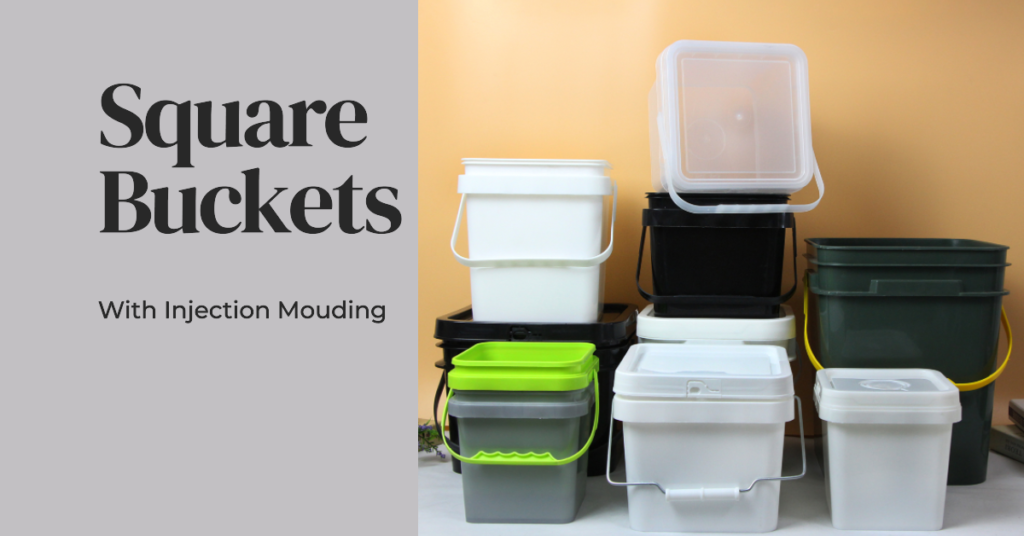
Alternatively, you may opt for a square plastic bucket design. Square buckets offer the advantage of efficient stacking and storage. They are also made from polypropylene (PP) or polyethylene(PE) or other thermoplastics, ensuring that they are sturdy and reliable. With the help of injection molding equipment, choose a square bucket design to suit your desired application and client base.
Bucket Handle Types
In this section, we will discuss the two common types of bucket handles: plastic and metal. Each handle type has its unique features and advantages for various applications.
Plastic Handles
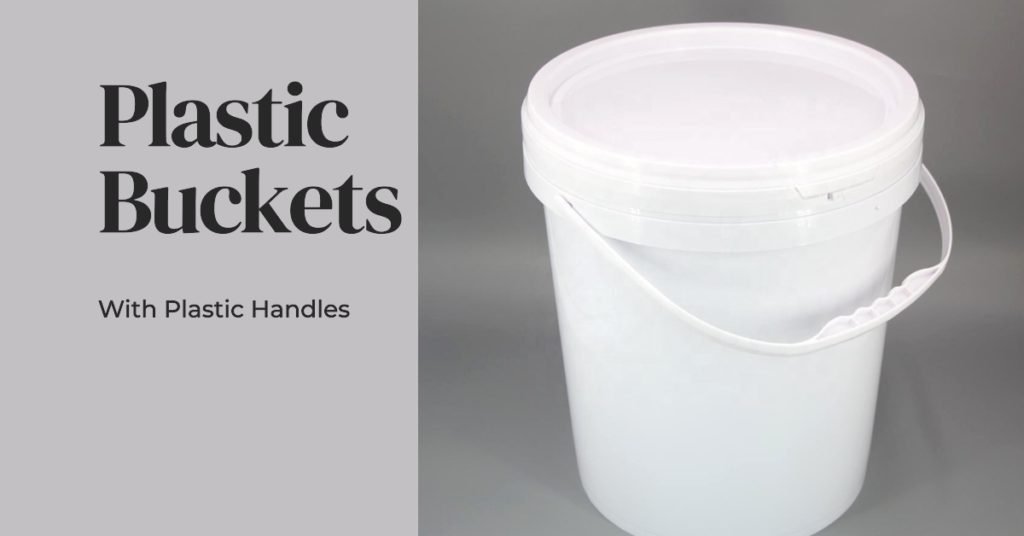
Plastic handles are often found on injection-molded buckets, as they can be easily incorporated into the manufacturing process. These handles offer a lightweight and cost-effective solution. Some benefits of plastic handles include:
- Reduced weight for easier transportation
- Resistance to corrosion and rust
- Available in various colors and designs
However, you should consider that plastic handles might not be as strong as metal handles, which could be an important factor depending on your application.
Metal Handles
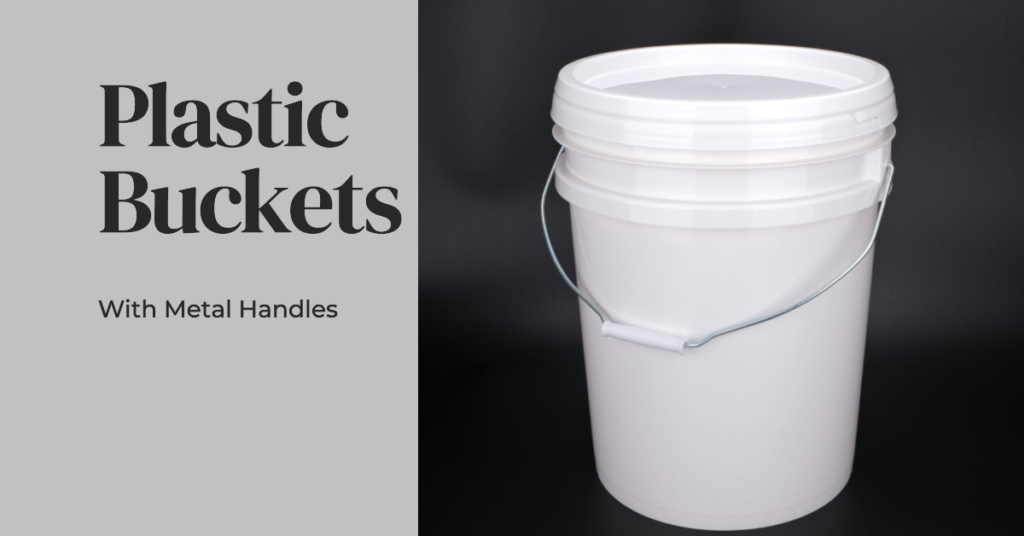
Metal handles are commonly used for larger, heavy-duty buckets. These handles provide a more robust and durable option compared to plastic handles. Some advantages of metal handles are:
- Increased strength for heavier loads
- Longer lifespan due to higher durability
- Ability to withstand harsh environments and conditions
While metal handles offer increased strength and durability, they may also be more expensive and require additional maintenance to prevent rust and corrosion.
Buckets Thickness Options
When designing your injection molding bucket, it’s essential to consider wall thickness. Proper wall thickness can help reduce the risk of cosmetic defects and improve the overall quality of your product. The ideal wall thickness depends on the material used and the specific requirements of your design.
We recommends that walls in any plastic-molded part be no less than 40 to 60 percent that of adjacent walls. This can help ensure uniform heat distribution during the molding process, leading to a more consistent and stable final product.
Additionally, you can reduce the amount of raw material needed and decrease the weight of the molded part. Whenever possible, consider replacing thicker walls with thinner ones to minimize material usage and save on production costs.
Some of the bucket thickness we suggest: 2.11mm/2.33mm/2.45mm/2.8mm.
Types of Bucket Colors
Customizable coloring options are also available, giving you the freedom to create buckets that match your branding or specific requirements. This helps you differentiate your products from competitors or maintain a cohesive appearance across your product range.
Remember to keep the end use in mind when selecting bucket colors, as certain colors may work better in specific environments, such as food preparation or product storage.
To achieve the desired color for your product, simply incorporate the appropriate masterbatch or color powder into the raw material during production. This allows for customization and flexibility in color choices.
Different types of bucket raw materials
Food Grade PP Raw Material
When making buckets for food, consider using food grade polypropylene (PP). This type of material is ideal for both food and non-food industries, offering durability and safety. Food grade PP is especially beneficial for applications where direct contact with food is involved.
Resistant -20°C to 120°C
Your injection molded buckets should be able to withstand a wide range of temperatures. A material like polypropylene (PP) is resistant to temperatures between -20°C and 120°C, making it an ideal choice for various applications. With this kind of temperature resistance, you can be confident that your buckets will maintain their structural integrity under various conditions.
Antioxidants
Advantages of plastic antioxidants below:
- Adding to polymer formulations prevent oxidation and extend service life.
- Reacting with free radicals, slowing degradation.
- Providing smoother processing.
- Preventing discoloration.
- Cost savings and reduced waste.
Talc powder
Advantages of adding talc powder into bucket raw material
Talc powder increases stiffness and impact strength, has good thermal conductivity, and prevents water vapor and oxygen transmission. It also contributes chemical resistance and achieves high creep resistance in polymers. Adding talc powder would help to make good quality injection molding buckets.
Fluorescent whitening agent
The addition of fluorescent whitening agents can help improve the appearance and color stability of white plastic buckets. This enhances the aesthetics and overall product quality, adding value and differentiation in a competitive market. As a result, customers are more likely to be satisfied with the brighter and cleaner appearance of the buckets.
Toughening agents
Toughening agents are an additives that possess the capability to decrease the fragility of composite materials and enhance their impact resistance. This results in plastic buckets having increased toughness, greater resistance to impact, prolonged service life, and enhanced durability.
Color Masterbatch
Color masterbatch is a concentrated mixture of pigments and/or additives that is added to raw polymer to color it economically. The advantages of using color masterbatch include better dispersibility of pigments in products, chemical stability of pigments, color stability of the product, and safer and simpler manufacturing processes.
You can add color masterbatch to plastic pails raw material according to your customer’s requirements to make the bucket color you want.
Conclusion
In conclusion, injection-molded plastic buckets are versatile and widely used in various industries. This guide provides valuable information on the types of buckets, printing options, handle types, wall thickness, and color choices, as well as the benefits of using additives to enhance the appearance, quality, and durability of plastic buckets. By understanding the different options available, businesses can produce cost-effective, high-quality plastic buckets that meet their customers’ specific needs and requirements. With the right material, thickness, and additives, plastic buckets can provide a safe, durable, and reliable solution for storing and transporting various buckets.
Frequently Asked Questions
What Size Injection Molding Bucket We Can Start?
When choosing a bucket for injection molding, it’s essential to consider the capacity you require. Injection molded buckets come in various sizes, ranging from small to large capacities. The capacity can be measured in liters or gallons, depending on your preference and application. There are some buckets sizes from 1L-50L for your reference:
| Capacity | Height | Upper diameter | Below diameter | Bucket mouth diameter |
| 1L | 130mm | 126mm | 105mm | 121mm |
| 2L | 155mm | 162mm | 134mm | 156mm |
| 3L | 178mm | 177mm | 144mm | 172mm |
| 3L-short style | 152mm | 180mm | 160mm | 174mm |
| 4L | 190mm | 202mm | 170mm | 195mm |
| 5L | 210mm | 214mm | 191mm | 207mm |
| 5L-short style | 157mm | 224mm | 210mm | 207mm |
| 6L | 265mm | 203mm | 170mm | 194mm |
| 8L-square style | 194mm | 250*250mm | 216*216mm | |
| 6L-short style | 183mm | 232 mm | 206mm | 227.5mm |
| 10L | 275mm | 260mm | 220mm | 252mm |
| 15L | 310mm | 300mm | 256mm | 292mm |
| 16L | 325mm | 300mm | 256mm | 292mm |
| 18L | 370mm | 300mm | 256mm | 292mm |
| 20L | 384mm | 300mm | 270mm | 292mm |
| 25L | 399mm | 320mm | 287mm | 312mm |
| 35L | 430mm | 353mm | 310mm | 345mm |
| 50L | 525mm | 400mm | 355mm | 382mm |
Can We Customize Color Buckets and Lids?
You have the option to customize the color of your injection molded buckets and lids. Work with your color masterbatches and powders ensuring it meets your specific needs and preferences.
Can We Adding a Logo to the Injection Molding Bucket?
Adding your logo to the injection molded bucket is a great way to promote your brand and enhance product recognition. Besides, you still have other ways to add your logo on the plastic buckets, such as IML(In mold label), silk printing, heat transfer printing, and label stickers.

